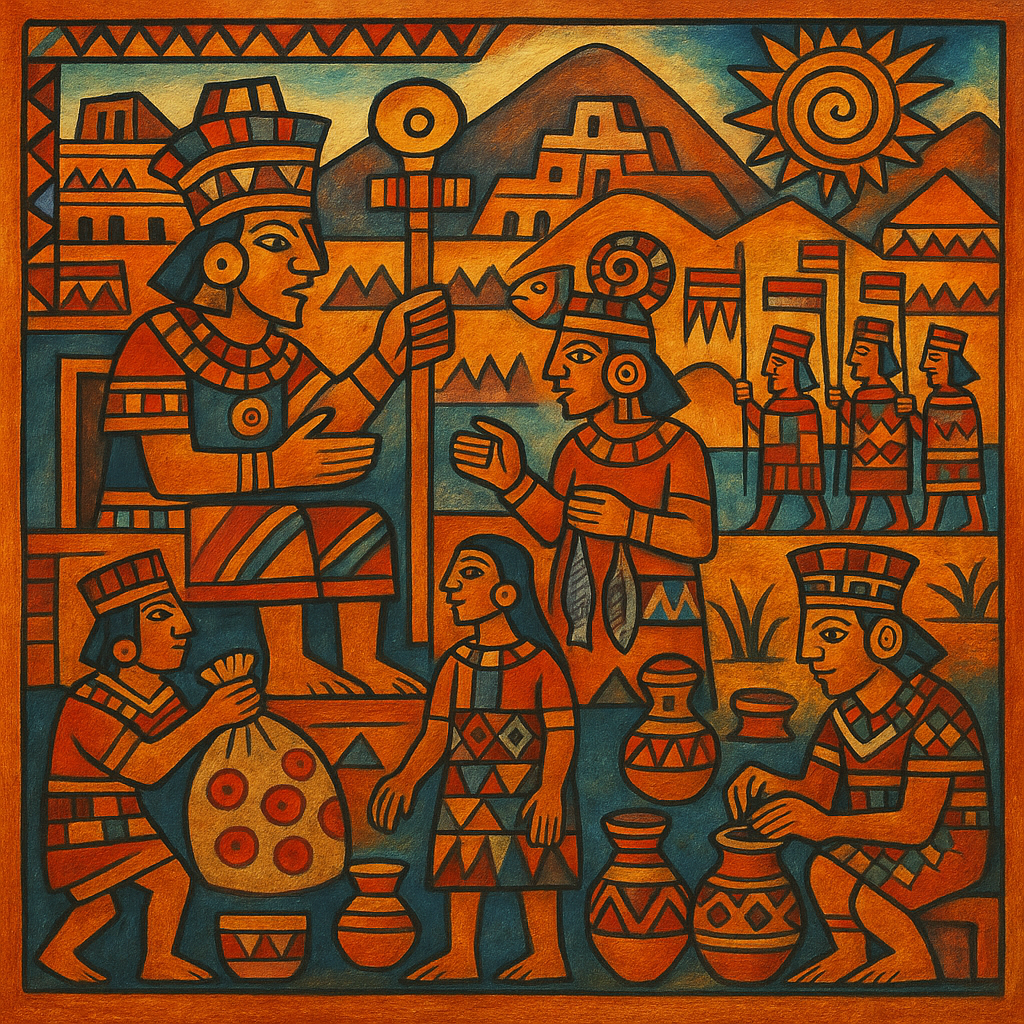Cultura Chincha

Artistic representation of the Chincha culture at its peak.
The Chincha emerged as one of the most powerful maritime and trading polities on the southern coast of what is now Peru. Flourishing roughly between the 11th and 15th centuries CE, their influence extended from the fertile valleys of the Pisco and Chincha rivers to thriving caravan routes linking the highlands and the Pacific shore.
Geography & Environment
Nestled between the arid coastal desert and the Andean foothills, the Chincha mastered:
- Irrigation engineering: Complex canal networks diverted mountain runoff to irrigate cotton, maize, and gourds.
- Maritime exploitation: Canoes carved from huarango trees ventured offshore for rich fisheries, fueling both diet and commerce.
Society & Economy
Elite & Administration
A hereditary nobility presided over a stratified society. Chiefs and their councils organized labor drafts—mit’a—to maintain canals, terraces, and storehouses.
Trade & Craftsmanship
The Chincha traded prized goods far inland and along the coast:
- Textiles: Cotton cloth dyed with cochineal red, indigo blue, and yellow from amarillo plants.
- Ceramics: Boldly painted vessels featuring marine motifs, geometric borders, and stylized human figures.
- Marine resources: Dried fish and sea-salt blocks, exchanged for highland quinoa and tubers.
Art & Iconography
Artisans produced visually striking works characterized by:
- Geometric patterns: Repeated triangles, zig-zags, and checkerboards.
- Natural pigments: Mineral and plant dyes lending deep reds, oranges, and blues.
- Symbolic motifs: Stylized suns, waves, and bird figures reflecting cosmology and coastal life.
Architecture & Urbanism
Chincha settlements sat atop low hills or river terraces, featuring:
- Adobe platforms: Raised plazas for ceremonies and administrative functions.
- Fortified enclosures: Defensive walls guarding against rival groups.
- Granaries: Colonnaded storehouses preserving surplus maize and cotton.
Decline & Legacy
The Chincha culture began to wane in the late 15th century, facing pressures from:
- Expansionist Incas: The Inca Empire absorbed Chincha territory, integrating their trade networks and artisans.
- Environmental changes: Prolonged droughts may have strained agricultural systems. Despite their decline, the Chincha left a lasting legacy:
- Cultural syncretism: Their textiles and ceramics influenced later Andean styles.
- Historical records: Chroniclers like Cieza de León documented their achievements, preserving knowledge of their society.
Further Reading & Resources
Explore more about Chincha culture and history at these recommended links:
- Centro Cultural Identidad Chinchana — Community-driven research, events, and cultural preservation.
- Wikipedia: Chincha Culture — Overview of the Chincha civilization, society, and legacy.
- National Geographic: The Chincha — Article on the Chincha people and their maritime prowess.
- Britannica: Chincha — Encyclopaedia Britannica entry on the Chincha people and their history.
- Peru’s Ministry of Culture (Spanish) — Official site with information on Peru’s cultural heritage.
If you have a favorite resource or want to suggest a link, let us know!